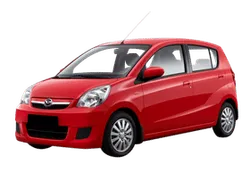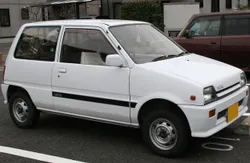

Daihatsu Cuore - Generation 2 L70 Overview
Explore the Daihatsu Cuore and its Generation 2 L70. This compact car offers efficiency and style, perfect for driving in Portugal. Discover more about this model today!
The Daihatsu Cuore, particularly the second generation known as the L70, is one of those vehicles that represents a significant chapter in the story of compact cars. Produced from 1987 until 1993, the L70 intro...
Technical Specifications
Select Version
Dimensions
Engine
Driving
Others
History and Features
Mycarro AI
Apr 27, 2025
The Daihatsu Cuore, particularly the second generation known as the L70, is one of those vehicles that represents a significant chapter in the story of compact cars. Produced from 1987 until 1993, the L70 introduced several innovative features while maintaining the affordable price points that Daihatsu is known for. This iteration of the Cuore was targeted primarily at urban drivers needing practicality without sacrificing comfort and style.
Design and Aesthetics
The design of the L70 is characterized by its boxy silhouette. This was a shift away from the more rounded shapes of its predecessor, and while some may consider it simplistic, the design is often considered timeless within the context of late '80s automotive trends. Its compact dimensions, measuring about 3.3 meters long, made it an ideal city car, easily maneuverable through tight spaces and congested streets. The front end featured a high hood and a sizeable windshield, providing good visibility, while the rear offered a practical hatchback configuration for versatility in cargo space.
Engine and Performance
Under the hood, the Daihatsu Cuore Generation 2 came equipped with a range of engine options, primarily focusing on fuel economy and reliability. The most common engine was a 0.8-liter, three-cylinder engine that produced approximately 40-45 horsepower, depending on the market and configuration. This little powerplant was mated to either a five-speed manual transmission or a three-speed automatic, making it a flexible option for various driving preferences. The Cuore’s lightweight design allowed it to excel in terms of fuel efficiency, with many drivers reporting mileage figures that often exceeded 40 miles per gallon, making it a sensible choice during a period of rising fuel prices.
Interior Features and Comfort
Inside, the L70 offered a surprisingly spacious interior for a car of its size. Despite its compact dimensions, the cabin was thoughtfully designed, comfortable enough for four adults, making it suitable not only for city commutes but also for longer journeys. While the interior materials might not have represented luxury, they were durable and easy to maintain, enhancing the car's practicality. Features like an AM/FM radio and optional air conditioning added to driver comfort, while the seating layout provided good visibility and accessibility.
Innovations and Safety
Daihatsu equipped the L70 with several innovations that were noteworthy for its time. Though it was a budget-friendly car, it featured a crumple zone designed to absorb impact during collisions, contributing to a secondary level of passenger safety. The model also implemented a simplified dashboard layout that appealed to non-technical drivers, making it easy to operate all vehicle functions without needing to consult an owner’s manual regularly.
Market Position and Legacy
The L70 played a crucial role in establishing Daihatsu's reputation as a producer of practical and efficient vehicles. It was particularly well-received in various markets, including Europe and Japan, where compact cars were becoming increasingly popular due to urbanization. The Cuore became synonymous with affordability and reliability, contributing to Daihatsu's substantial growth during the late '80s and early '90s.
Conclusion
The Daihatsu Cuore Generation 2 (L70) encapsulated the essence of what a compact car should be during its heyday: reliable, economical, and practical. While it may not be a performance powerhouse or a luxury vehicle, it succeeded in meeting the needs of everyday drivers. Today, classic car enthusiasts and collectors have begun to appreciate the unique charm of the L70, ensuring that this generation of the Cuore will not be forgotten. With a legacy built on functionality and efficiency, the L70 remains an important part of automotive history.
